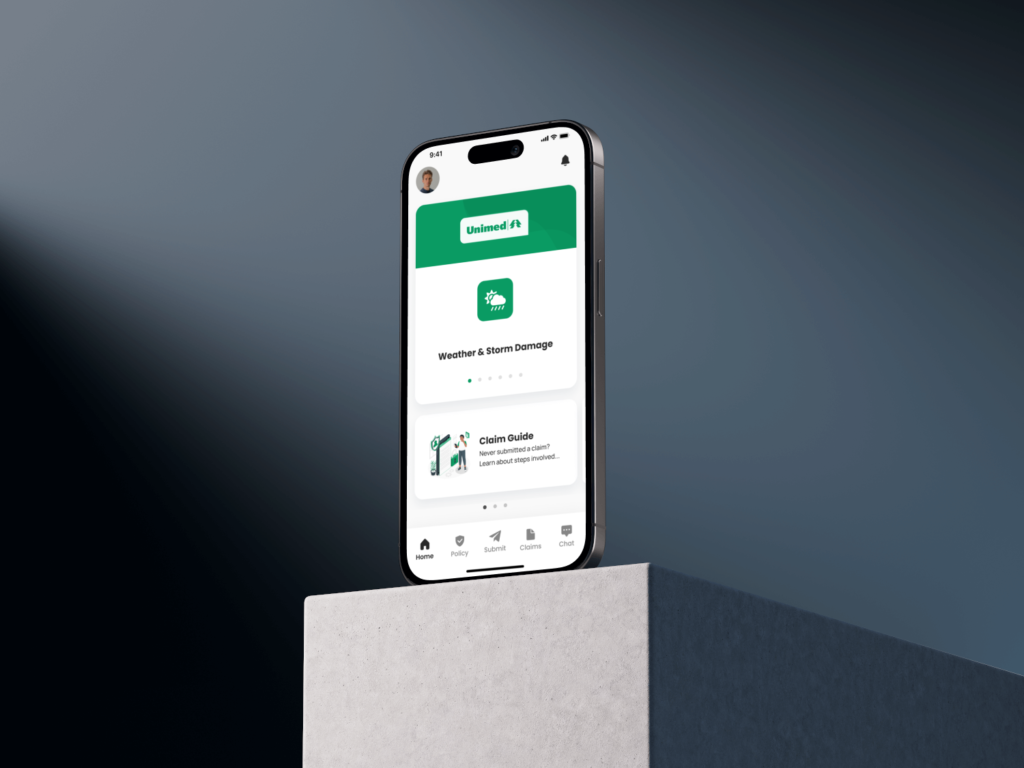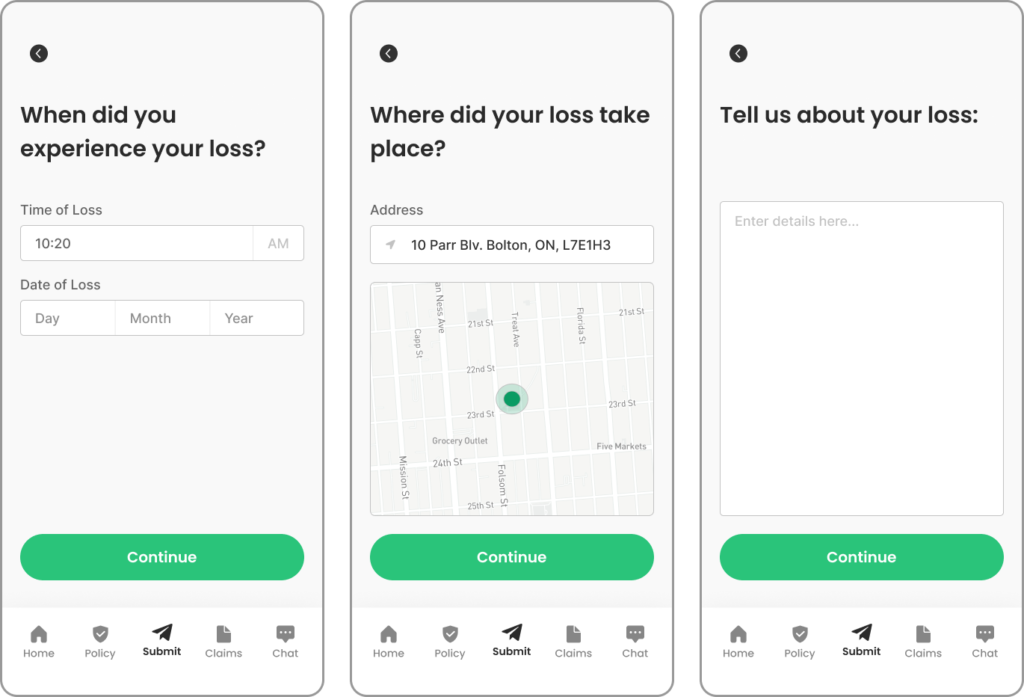Insurance Claims App
Product Development Case Study – 2022
The Project
I was tasked with directing the design and development of VCA Software’s first new product in over 15 years: an Insurance Claims Mobile App for small-scale Carriers. The product’s goal is to provide improved transparency and communication to policyholders during claims while remaining fully customizable for Carrier branding. Ultimately, the team developed an iterative MVP version of a Mobile Progressive Web App, achieving my UX and Product Vision.
The Plan
- Research and Identify the trends in the InsurTech market, and Identify any pain-points with policyholders as it relates to communicating and understanding insurance claims and policies.
- Identify opportunities for a mobile app to enhance the process by bringing Transparency, Communication, and Education of Insurance Policies and Insurance Claims.
- Design and Prototype a high-fidelity version of the system. Conduct research to validate it achieves the goal of the new product and delivers value to the market.
- Work with a team of software engineers to roadmap, and execute, on the MVP iteration of the product. Use the Scrum framework to deliver value to stakeholders each Sprint.
- Conduct usability testing after completion of the MVP to validate assumptions and identify opportunities for upcoming iteration enhancements of the product.
- Produce and uphold a product strategy which will deliver a return on investment and maximize the value the product holds for the organization.
My Role
I started this project as the Product Designer, leading the design through an Agile User Experience Design Approach. During this phase, my main priority was to identify user needs and pain points, and wireframe a design that would support the findings. My role consisted of presenting and performing usability testing of my design to industry experts and prospective users, collecting feedback and iterating through discovery.
During the implementation stage of the project, my role shifted to becoming the companies Product Owner, with the objective of maximizing the amount of value the product would bring to stakeholders. My role consisted of developing and maintaining product backlog of user stories, and work within the Scrum Team to ensure each Sprint delivered a functioning increment.
After completion of the MVP, my role continued to testing the product within the market to validate the assumptions made and collect enhancements for product iterations. Ultimately, I delivered a product backlog of user stories for product improvements, which would boost its value for its intended users in the market.
Research Discoveries
Early in the products lifecycle, a goal was to address another market in the industry: Insurance Brokers. The product vision crafted had encompassed the needs and pain points of this group, and some features within the app were designed and crafted to provide value. However, after thorough market research, and many product showcases to Insurance Brokers, we discovered that the product did not increase value for this user base. Therefore, I had to make the decision to pivot on the current product vision to eliminate features that would support Insurance Brokers, ultimately maximizing the value for its primary intended user: the policyholder.
Although we eliminated the value for the Insurance Broker, this discovery produced an excellent scope for the organization to conduct research and produce a new product which could address the needs of Insurance Brokers. Ultimately this event opened the door for the organization to explore more opportunities and expand their product suite.
Claim Submission Feature Design
It was critical to investigate and understand the state of users during interaction in order to convey empathy into the design for the Claim Submission Feature. It was evident that in most circumstances, users would be dealing with a highly stressful scenario due to property loss or damage, as well as injury or death. As a result, the objective was to keep the interface simple and not overwhelm the user with more information or text. To avoid overloading the user, the design tries to keep questions short and basic, while offering several input methods to assist the user achieve the goal swiftly and painlessly.
Summary
I Worked with a team of software developers to plan and execute on the product’s MVP iteration. Each Sprint, use the Scrum framework to increase value to stakeholders. Following the completion of the MVP, my work expanded to market testing the product to confirm assumptions and collect enhancements for future product versions. Finally, I presented a product backlog of user stories for product changes that would maximize its market value for its targeted consumers. This project led in the creation of a new mobile app for the firm, as well as the introduction of a new design language and user experience standards, as this project allowed the organization to explore new opportunities and increase their product offerings.
Platforms Used
- Figma
- Figjam
- Notion



